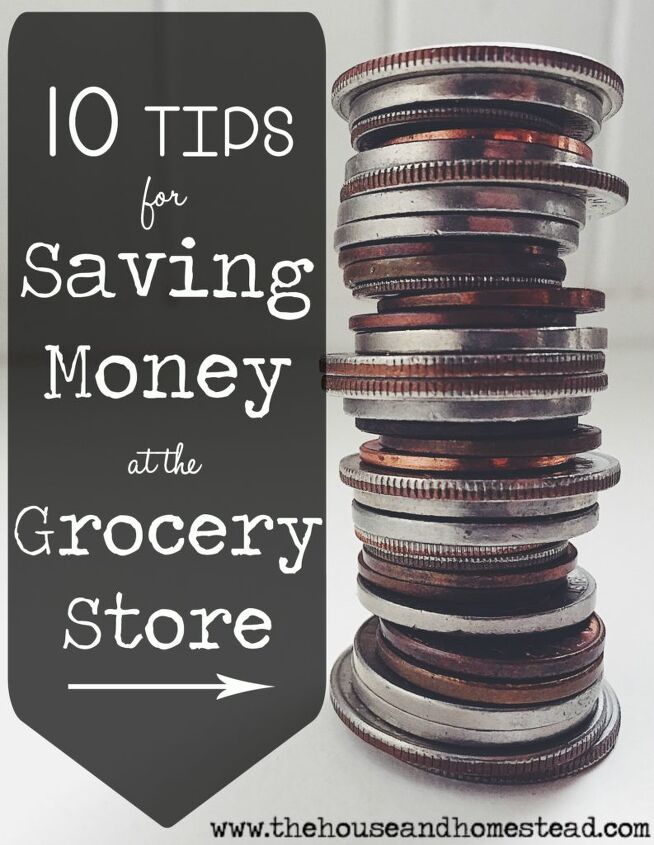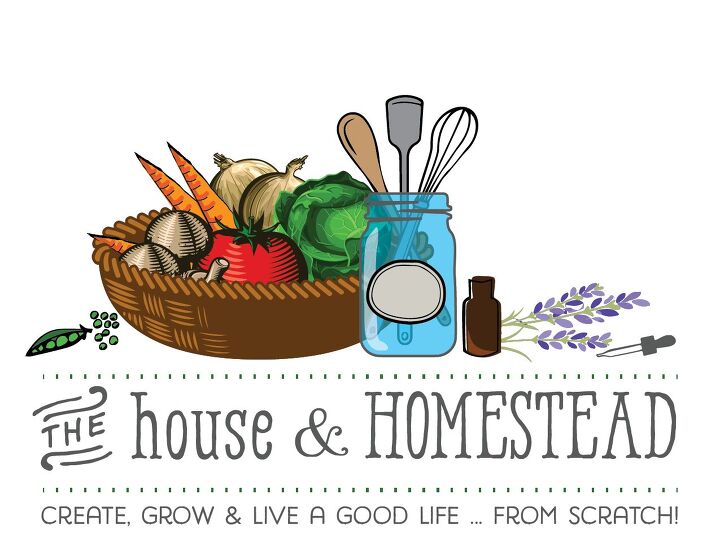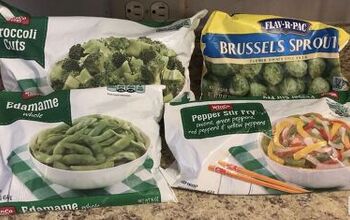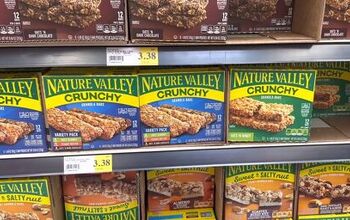10 Tips to Help You Save Money at the Grocery Store

10 Tips to Help You Save Money at the Grocery Store
Your monthly grocery bill can make or break your budget depending on your shopping habits. If you run to the store every time you need something, you’re probably spending more than if you intentionally planned your shopping trips.
Practicing simple habits like checking flyers, writing lists and stocking up when things are on sale can help you save thousands of dollars on groceries over the course of a year.
Every dollar you save is a dollar more in your bank account, and those dollars add up. Over time your savings could equal a new vehicle, a family vacation or some extra padding on your emergency savings fund.
I have personally tried and tested all of the following money-saving methods and I am amazed how much money I save while still eating (and feeding my family) incredibly well and never feeling deprived.
The best part is that all of the actions on this list are things you can start doing right away. The only investment is a little of your time. So dust off your piggy bank and start saving those hard-earned dollars. And remember to treat yourself when that bank is full!
1. Check flyers
This is so important. Take some time to flip through your local flyers before you hit the grocery store. Check your list and then check flyers to see if anything you need is on sale. Circle items that are a good deal and write down the price and store name beside the corresponding item on your shopping list.
If you see something on sale that you know you will need soon (like toilet paper) but it is not on your list, circle it anyway and if you’ve got any wiggle room in your budget, stock up while it’s on sale.
You can also check flyers online if you think it’s too much of a hassle to spread all the paper flyers out and do this the old-fashioned way. You can go to each store’s website to check their weekly flyer, or check out flipp.com.
2. Check your receipt!
Cashiers are human too, and they make mistakes! But the onus is on you to check your receipt and make sure you were charged correctly.
Always check your receipt, but as an added “safety measure,” make a mental note of (approximately) how much each item costs as you put it in your cart. Or go one step further and write down the price on your shopping list as you go. Doing this will give you a pretty good idea of what your total will be so you’ll know if there’s a discrepancy when you go to pay.
If your total cost sounds off, make sure to check your receipt. But even if it sounds right, it doesn’t hurt to give it a once over.
If you notice a mistake, take your receipt to customer service and get your money back. I am not kidding when I say that I notice mistakes all the time. Although it takes a few minutes to correct, it’s well worth the savings. As an added bonus, some stores even credit you extra cash for your troubles. It really does pay to be vigilant!
3. Use loyalty points
I know, collecting points can be a slow process and wallets just aren’t made with enough pockets to hold all those membership cards, but collecting loyalty points really can pay off.
When my husband lost his job right before Christmas a few weeks ago, I decided to save some money by redeeming over $200 worth of points at the grocery store. I only had to pay another $13 and our entire Christmas
Many points programs at major retailers are also getting easier to use. Nowadays you can usually download an app with a barcode matching your account so all you need to do is scan your phone at checkout.
There are also lots of ways to accumulate points quicker. Just like checking flyers, it pays to check for any special points offers at the stores you frequent. Buying certain products or spending a certain amount in one trip may also earn you extra points. Sometimes, though, you need to load the points onto your card by clicking a link online or through an app. As soon as I figured this out I started earning points WAY quicker. So check your loyalty points programs to see if there are added ways to earn.
Now for the warning: Don’t buy things (or shop at a certain location) JUST to earn points. You will end up spending more money this way, which is what stores bank on. You still need to do your homework and figure out where you are going to get the best deal. Something may be worth points at one store, but may be on sale for a great price at another. You will need to calculate the savings.
If the sale price will save you more money than the points are worth, forgo the points. If, however, the points are worth more in future savings than the current sale price, you may want to spend more up front and earn points for later if your budget allows it.
Also, don’t buy something you don’t need just because it’s worth lots of points. If it’s something you need, want and will actually use now or in the future, then go for it. If it’s something you only want but don’t need and/or if it doesn’t fit into your budget, put it back and save your money now. There will be another deal on something worthwhile in the future.
4. Use coupons
Much the same as using points, check for coupons for products on your shopping list. I’ll be honest, I’m not a huge coupon collector. This is simply because I rarely seem to find coupons for things I actually want or need. It’s still worth it to check for coupons though because when you do find one it’s like finding free money!
You can check newspapers, flyers, the entrances and aisles of grocery stores or even just ask the cashier! You can also check online. When I am shopping online I will almost always google “Coupon Code for (name of product or website I am shopping on)” and see if I can find a discount code.
I will also check directly with company websites to see if I can get a manufacturer’s coupon for certain products. For example, the last time I bought Advil I went to Advil’s website and found a section called Offers and Coupons. Lo and behold, I scored a $1.00 off coupon for a product that I was going to buy anyway.
The great thing about manufacturers’ coupons is they typically can be doubled up. So if the item is on sale or if the store is offering extra points or a store coupon for the product, you can throw down a manufacturer’s coupon and get the store savings as well.
5. Know your unit prices
If you really want to be a savvy shopper, you’ve gotta know your unit prices. You have to understand how to do this if you are going to accurately compare prices.
Let’s say you’re buying orange juice: You can get a 59 fl oz carton (or for Canadians, a 1.5 litre carton) for $5.99 or you can get a 32 fl oz carton (900 ml) for $3.99. Which is the better deal? In some cases the price per unit will be marked on the sale tag, but most times it is up to you to figure out. Here is where you need to know some basic math.
- Take the price of the first item and divide it by the amount of units the product is being measured in (in this case fluid ounces): So 5.99 / 59 = .1015… So the cost per unit is just over 10 cents per fl oz.
- Do the same thing with the second item: 3.99 / 32 = .12468… So the cost per unit is just over 12 cents per fl oz.
- Now that you have the cost per fluid oz for each item, you can accurately compare them: 10 cents per fl oz for product #1 vs. 12 cents per fl oz for product #2. Product #1 (the larger carton) is the better deal.
Use the calculator on your cell phone or carry one with you when you shop. You can even do simple calculations in your head. The more you make this a habit, the quicker and easier it will become.
You will benefit from knowing a few basic conversions (such as grams to ounces) and also how many of each unit are in a larger unit (such as how many millilitres are in a litre, or how many ounces in a pound). But while you may memorize some of these, you can always just Google these conversions on your phone. There are also some great, free apps available that will do the same thing.
6. Stock up on sale items
One of the biggest mistakes that people make is buying things at full price as they need them. You can and should stock up on non-perishable essentials like toothpaste or toilet paper when they’re on sale.
If you decide to stock up, however, stick to stocking only what you and your family will actually use. If you don’t like oatmeal, don’t buy up the store when it’s on sale. Remember, a deal is only a deal on things we actually want and will use. Otherwise you’ll just waste money and clutter your house with stuff that will take up space until it eventually gets tossed.
Check flyers regularly to know when the things you use are on sale. Check stores for sales, especially after holidays and at the end of the season. Seasonal items always go on clearance, and you can get all sorts of great deals on everything from cookie cutters and paper plates to chocolate and candy. Plus, you can stock up on things you can use next time that holiday rolls around, like decorations and gifts!
7. Buy in season (and grow your own)
When you buy fruits and vegetables in season you’re buying when they’re most abundant. Since the supply is high and the products are perishable, the prices for produce in peak season are usually significantly lower.
I am also a strong advocate for eating local and supporting your local farmers. Buying in season means you can buy from local farms that grow organic food and leave a smaller carbon footprint.
When you buy out of season, the produce you eat has to be shipped in from somewhere it is growing. That means it’s more likely to be genetically modified and/or sprayed with pesticides to keep it in pristine condition until it finally reaches your plate. In the end, buying in season means you’re saving money, supporting your local community and getting healthier food.
Of course, you’ll save even more money if you grow your own fruits and veggies. But if you’re just starting out or don’t have the space to grow enough food to feed your family for the year, buying local food in season is a nice way to supplement your food supply.
Now, I know that there are certain fruits and veggies that don’t grow in your zone, but I still recommend buying them in season from the closest possible source. Since I’m in the Pacific Northwest, things like lemons, oranges and pineapples don’t grow here, so I buy them when they’re in season in the closest places that they do grow: California and Hawaii. I’ll stock up on these items in late winter -when they are in season in their respective climates- and preserve them for enjoyment all year round.
Only stock up on a bunch of fresh produce if you are ready to preserve it though. Otherwise just buy as much as you will be able to eat fresh so it doesn’t spoil and cost you money. And again, only buy produce that you and your family will eat. There’s no point in buying 10 lbs of green beans to put up if no one in your family eats green beans. It will only cost you money and time preserving it all if it never makes it to your dinner plate.
If you do end up with extra produce that you won’t eat or can’t preserve, consider sharing with neighbours, friends and family or donating to your local food bank. Someone may as well get to enjoy it, and feeding others is never a waste of money.
8. Eat before you shop
Shopping on an empty stomach is a bad idea. When you’re hungry you’re more likely to buy junk food and to deviate from your shopping list. In fact, you may even be more likely to buy non-food items!
According to a study from the University of Minnesota, hunger makes us more tempted to acquire things in general, so we tend to impulse shop and overbuy.
The solution to this problem is a simple one, but you need to make it a conscious habit to fill up before you hit the supermarket and stick to your shopping list while you’re there. Having a quick bite before grocery shopping might also save you calories on all those sample foods! (Although who’s gonna pass up free food?)
9. Make a list
I can’t tell you how many times I’ve wandered the grocery store aimlessly wondering what to buy. In fact, this happens every time I go without some sort of list. I also find that I usually end up buying more processed foods instead of buying raw ingredients to make something from scratch.
Even keeping a mental list is better than no list at all. But writing a proper list on paper will definitely increase your chances of staying on budget. Of course, you will need to stick to the list, but you are 100% more likely to stick to a list that you’ve written than a list that doesn’t exist!
As an added bonus, when you sit down and intentionally make a list ahead of time, you can stick to a meal plan and do some pre-planning by checking flyers for the best deals on the things you need. You’re also more likely to make healthier choices.
When I make my lists I also write the flyer price down beside each item so I have a good idea of how much my grocery trip will cost. This will also help you catch any discrepancies at checkout if you are accidentally charged the wrong price for something.
10. Use cash
Spending on credit cards makes you more likely impulse buy and to spend more money. In fact, according to one popular study, consumers who shop with credit cards spend an average of 12-18% more than their cash-carrying counterparts. Using cash is a physical reminder of the value of money. It can make us think twice about trading it for things we don’t really need or want.
If you decide to forgo the plastic, you may want to consider using the envelope system. This is where you make envelopes for all of your major spending categories (ie. groceries, transportation, entertainment, etc.) and allot a certain amount of cash to each envelope for the month.
The trickiest part is sticking to only spending cash from the envelopes. If you can commit to this system though, it’s a surefire way to keep you on budget! To learn more about how the envelope system works, check out this post on money-guru Dave Ramsey’s site.
While using cash is often recommended to help you stay on budget, it might not be the best option for you. My husband and I have tried it multiple times but we actually find it easier to spend from our joint bank account. This way we don’t have to worry about saving all our receipts and we can both access our account to keep track of spending.
There are also some great apps like Mint and EveryDollar to help you keep track of spending with credit and debit. I would recommend trying both systems and doing what works best for you. Then stick to only cash or only cards. Mixing the two is a surefire way to lose track of spending.
Planning and Preparation is the Key to Saving Money
When it comes to saving money, planning and preparing for a shopping trip or big expenditure can be well worth it’s weight in gold.
Planning helps to avoid money-spending pitfalls like impulse buying and overspending. When you’re intentional about how you spend your money you’re more likely to keep more of it. You’re also more likely to only spend on items that truly benefit you and enhance your life.
Stocking up on things while they’re on sale is another awesome strategy for saving money in the long run. But becoming too focused on taking advantage of sales can cost you in the end if you’re not careful. You may end up impulse buying a bunch of stuff you don’t need just because it was on sale.
I’ve said it already, but I can’t stress this point enough. A deal is not a deal if it’s on something you don’t like, won’t use or never knew you needed until you stumbled upon it. If you are serious about saving money, your purchases need to be intentional.
So by all means, stock up on 500 rolls of toilet paper. You will use toilet paper and the rolls won’t go bad before you can get to them all. But don’t waste your money on anything that will just clutter your space and eventually go to waste. At that point you may as well just throw your money away. Always remember that spending money is spending money. You are only saving money on sale items if you planned to spend that money on those items in the first place.
Be intentional, invest a bit of time up front, know a real deal when you see it and be prepared to stock up when the getting is good. And remember to create a budget and keep track of your spending! I guarantee if you follow these steps you will save money, and shave hundreds or even thousands off your grocery bill each year.
So start dreaming about what you will use all that extra money for! Just remember to spend it wisely.
© The House & Homestead | All Rights Reserved | Legal
























Comments
Join the conversation
i use fetch helps with giving gift cards and cash
I agree with using credit for the benefit of cash back rewards. You must be disciplined and not overspend. Been married 40 years, raised a family and have received over $5,000 in cash back rewards. Always paid my credit card bills in full every month - never paid any interest. Spent the same amount of money as I would have if I used cash, so I got $5,000 for free. I still use coupons, shop for sale items and use many of the tips you have suggested. But my best benefit has been the cash back rewards on my credit cards.